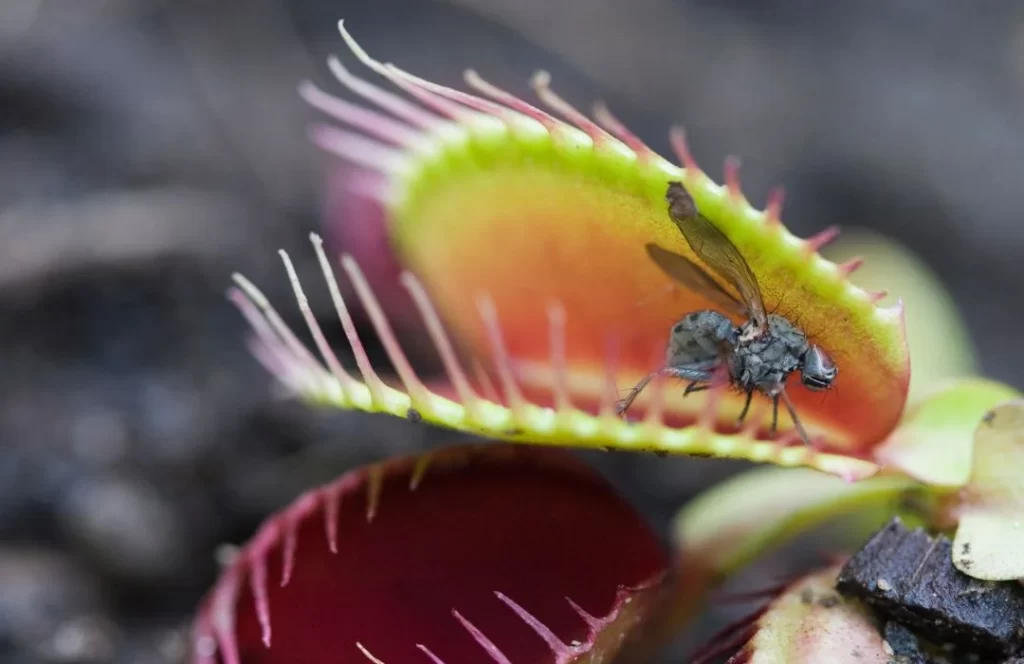Introduction
Venus Fly Traps are fascinating and unique plants that capture the attention of many plant enthusiasts. These carnivorous plants have intricate mechanisms to catch and digest their prey. In this blog, we will delve into the diet of Venus Fly Traps and explore how to effectively feed them to ensure their healthy growth and development.
The captivating Venus Flytrap, with its snapping jaws and carnivorous appetite, beckons plant enthusiasts everywhere. But bringing this botanical wonder indoors presents unique challenges. Harsh tap water, insufficient sunlight, and missed dormancy periods can quickly send your flytrap spiraling towards demise.
Fortunately, with the right know-how, your home can become a thriving ecosystem for this fascinating predator. This guide unveils the secrets to unlocking successful indoor Venus Flytrap care, transforming your windowsill into a captivating display of nature’s ingenuity. Are you ready to dive into the world of carnivorous plant cultivation and witness the magic of the Flytrap firsthand? So prepare your distilled water, embrace the sun, and get ready to witness the captivating dance between plant and prey, all within the comfort of your own home.
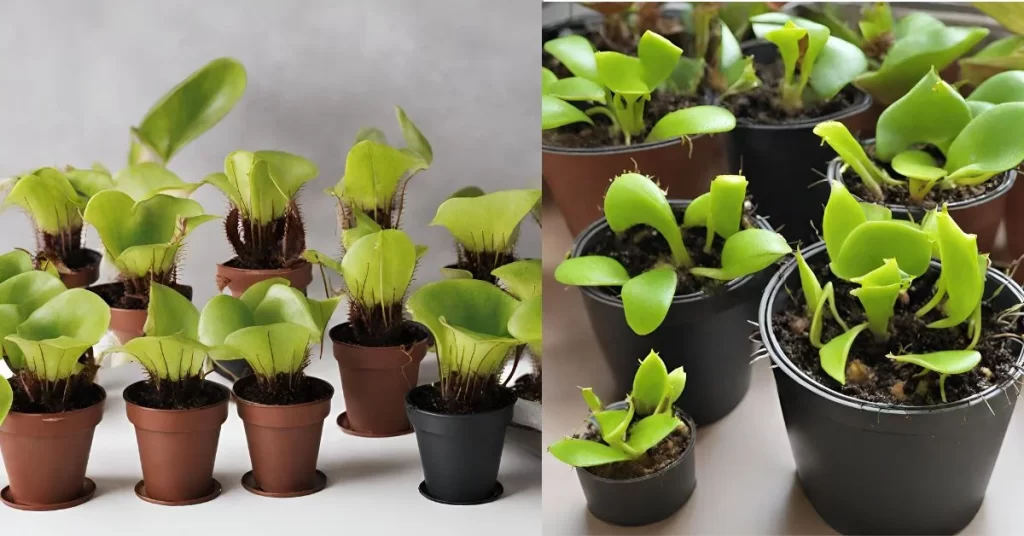
The Natural Diet of Venus Fly Traps
In the wilds of North and South Carolina, where Venus Fly Traps naturally grow, their primary source of food is ants. These carnivorous plants typically catch larger ants, such as fire ants or red ants, which are about a quarter of an inch in size. These ants are more substantial and provide more nutrients for the Venus Fly Traps compared to smaller ants like the Argentinean sugar ants commonly found in households.
Moreover, Venus Fly Traps are not particularly efficient at catching fungus gnats, which may invade your houseplants. If you are looking to tackle a fungus gnat problem, it would be more effective to consider investing in Cape Sundews. These plants have sticky leaves that are excellent at capturing tiny prey like fungus gnats.
Feeding Venus Fly Traps: A Closer Look

To ensure the proper nourishment of your Venus Fly Trap, it is essential to provide them with suitable prey. One readily available food source that you can find at pet shops is mealworms. These mealworms can be refrigerated for up to two months, allowing you to keep a supply handy for feeding your plants. While it may not be the most pleasant life for the mealworms, it serves the purpose of sustaining your Venus Fly Trap.
Understanding the mechanism of the trap is crucial to comprehending why larger prey is necessary for successful digestion. The eyelashes of the Venus Fly Trap do not contribute to closing the trap. Instead, the sweet nectar that lures in the prey is located on the inside of the lip. This design forces the prey to navigate through the bars, creating a challenge for them to reach the nectar.
Within the trap, there are three hidden trigger hairs on either side. These trigger hairs need to be touched simultaneously or bent twice quickly, similar to a double click of a mouse, to activate the trap. This mechanism ensures that only larger prey can trigger the trap and be effectively digested. Smaller bugs, like fungus gnats or tiny ants, are unlikely to be able to touch the required trigger hairs.
Feeding Demonstration
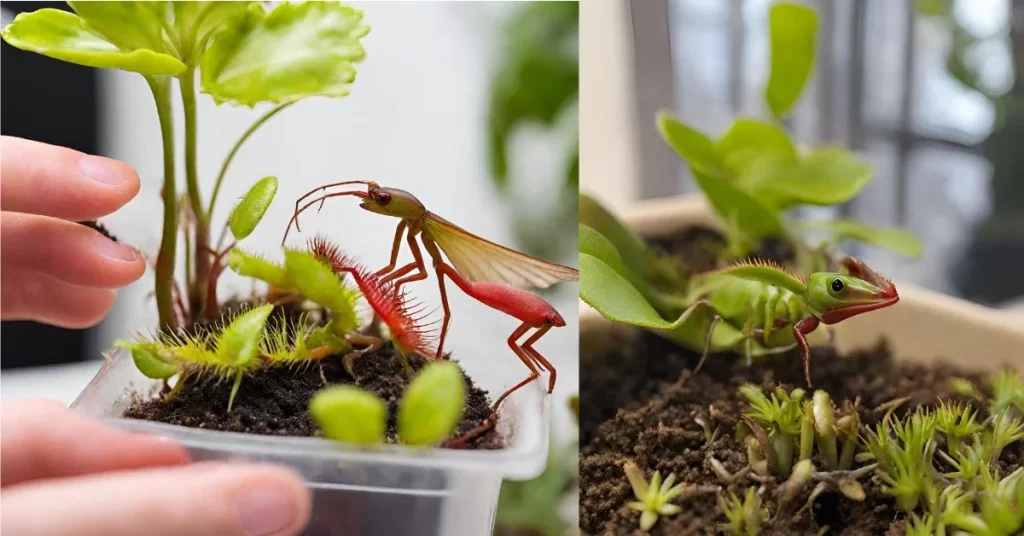
Let’s observe a feeding demonstration with a mealworm to witness the Venus Fly Trap’s mechanism in action. As we place the mealworm into the trap, you can see how swiftly it closes, ensuring the capture of the live prey. The continuous movement of the mealworm inside the trap triggers the trap to close even tighter over time. While the tiny bars temporarily seal the trap, they leave small holes for smaller bugs to escape. This design prevents the plant from wasting energy on digesting insignificant prey.
Watch the Video on how to Feed Venus Fly Traps :
By the next day, the Venus Fly Trap will release acids and enzymes into the trap to start the digestion process. However, the exoskeleton of the prey is challenging to digest and will remain intact. If the trap reopens after a day, do not be discouraged. The plant has already absorbed the soft parts of the prey for essential nutrients, but the exoskeleton will persist. Remember, if a dead bug is placed in the trap, and it opens up the next day, it indicates that the plant was unable to digest it effectively.
The Best Way to Feed Venus Fly Traps
Feeding Venus Fly Traps with live prey remains the most natural and effective method. By allowing the plants to capture and digest their own food, they receive the necessary nutrients for optimal growth. Additionally, Venus Fly Traps tend to grow more rapidly when fed through this natural process.
While you can purchase mealworms from pet shops, you also have the option to scavenge for bugs in your yard. Slugs, roly-polies, earwigs, and other unwanted insects can serve as a suitable food source for your Venus Fly Traps. It is not necessary to buy bugs specifically, as long as you ensure that the bugs you introduce are safe and suitable for the plants.
However, it is worth noting that feeding Venus Fly Traps with meaty or fatty substances, such as hamburger or cheese, can result in the rotting of the trap. The plants produce antibiotics and antifungals to aid in digestion, but a large piece of hamburger may overpower these defenses, leading to rot instead of digestion. Hence, it is advisable to avoid such food items and stick to live prey or commercially available mealworms for feeding your Venus Fly Traps.
How to Properly Water a Venus Fly Trap
Watering a Venus Fly Trap may seem like a daunting task, but it’s actually quite simple. In this blog, we will discuss the best practices for watering your Venus Fly Trap to ensure its health and longevity. Whether you choose to use a tray or simply sit the pot on a table, we will provide you with all the necessary information.
Watch The You Tube Video:
Watering Techniques
Contrary to popular belief, Venus Fly Traps do not require to be constantly sitting in water. In fact, it is not a requirement at all. However, there are certain benefits to using a water tray. The basic idea is to keep the sphagnum moss or peat moss moist. You can check the moisture level by putting your finger into the soil. If it feels dry, it’s time to water your plant. If it’s moist and wet, like any other potted plant, it’s fine.
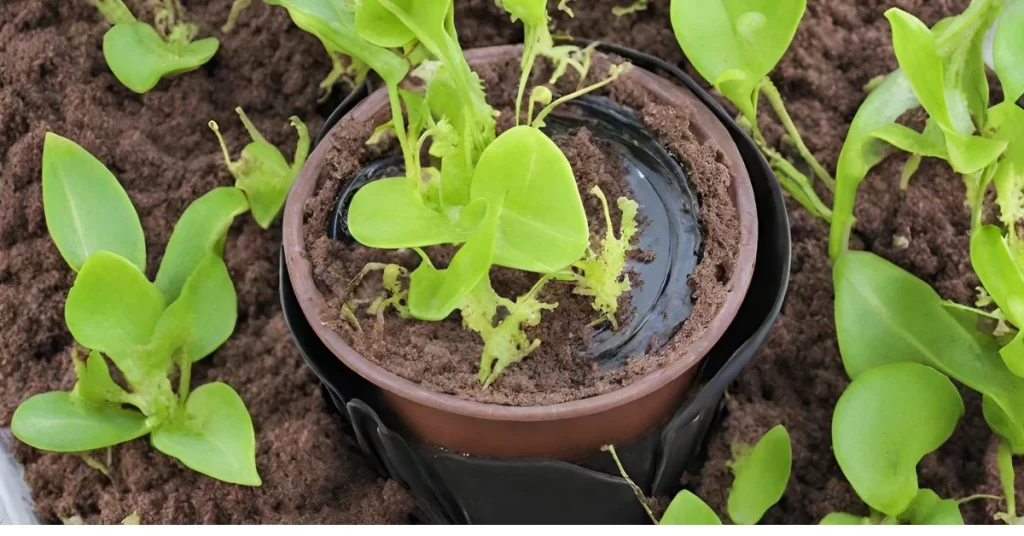
For small pots, especially those kept outdoors in full sun, it’s easier to use distilled water. Tap water or bottled water with lots of minerals can be harmful to the plant. Rainwater or reverse osmosis water are also suitable alternatives. Fill the tray with about a quarter to half an inch of distilled water. Place the pot in the tray and allow the water to completely dry out before refilling it. This method ensures that the plant remains evenly moist without overwatering.
If you choose not to use a water tray, you can achieve the same moisture level by simply sitting the pot on a table or patio. However, you will need to check the soil regularly and water it manually to maintain the desired moisture level.
Consider Pot Size
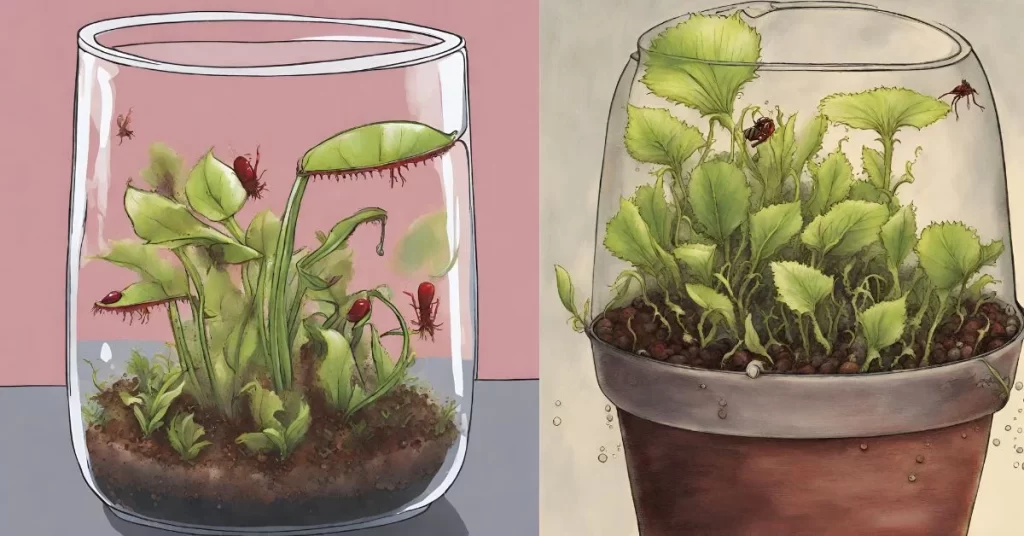
The size of the pot also affects the watering frequency. Smaller pots tend to dry out faster compared to larger containers. For example, a container with seed-grown Venus Fly Traps will dry out quickly. On the other hand, a larger pot filled with a combination of sphagnum moss, peat moss, and perlite will retain water for a longer period. Therefore, the size of the pot should be taken into consideration when determining the watering frequency and method.
Seasonal Variations
Another factor to consider when watering your Venus Fly Trap is the season. During the summer, when it’s hot and sunny, the plants require more water. This is when using a water tray with a small amount of water becomes beneficial. It ensures that the plants receive enough hydration without being flooded. However, in the winter, spring, and autumn, the plants can simply sit in a dry tray. If the tray fills up with rainwater, it should be emptied to avoid overwatering and potential rot.
During the winter, the evaporation rate decreases, and the plants do not need to sit in water anymore. This can lead to excessive moisture, which increases the risk of root rot. Therefore, it’s crucial to adjust your watering routine according to the season to maintain the optimal moisture level for your Venus Fly Trap.
Conclusion
Conquering the art of indoor Venus Flytrap care requires mastering two key elements: proper hydration and a balanced diet. While basking in sunlight and maintaining dormancy cycles are crucial, understanding their watering needs is paramount. Forget harsh tap water; distilled water or rainwater is the lifeblood of your plant. Whether employing a water tray or manual watering, ensure the soil remains consistently moist, avoiding both complete dryness and waterlogging. Remember, a happy Flytrap is a hydrated Flytrap!
Speaking of nourishment, while its namesake implies a fly-centric menu, larger ants are the true stars of the show in the wild. Indoors, live mealworms provide the optimal, nutrient-rich meal. While tempting, resist the urge to offer house flies or other random bugs, as they might introduce detrimental elements that lead to trap rot. Stick to the recommended diet, and witness the captivating process of your Venus Flytrap transforming into a miniaturized hunter, thriving within your indoor ecosystem.
By combining the best of both worlds, these insights empower you to create a harmonious environment for your captivating carnivorous companion. Let your indoor Venus Flytrap flourish, captivating you with its beauty and reminding you of nature’s wondrous complexity. Now, go forth and conquer the art of indoor Flytrap care!
What’s the best way to feed my Venus Flytrap?
Live mealworms purchased from pet stores are the safest and most effective option. Avoid dead bugs, meat, or random insects, as they can cause rot. Larger ants are the natural prey, but mealworms provide similar nutrients indoors.
How often should I feed my Venus Flytrap?
One mealworm every 1-2 weeks during spring and summer is sufficient. During dormancy (winter), feeding isn’t necessary. Allow the trap to fully digest before feeding again (trap reopens)
How should I water my Venus Flytrap?
Use distilled water or rainwater. Avoid tap water. You can use a water tray (1/4-1/2 inch) or water manually, keeping the soil moist but not soggy. Adjust watering based on pot size, season, and climate.
What are some signs of overwatering or underwatering?
Brown, crispy traps indicate underwatering. Mushy, black traps suggest overwatering. Adjust your watering routine accordingly. Remember, proper hydration is crucial for happy flytraps!
Why does Venus Fly Trap not close after feeding?
If the trap reopens after a day, it doesn’t necessarily mean something’s wrong. The plant might have absorbed the prey’s nutrients and left the exoskeleton behind. Dead bugs indicate the trap couldn’t digest them effectively.
Can feed Venus Flytrap anything else?
No, avoid human food like meat or cheese. They can rot the trap. Stick to live prey or commercially available mealworms.
Looking for More articles on Indoor Activities? Visit our Website www.indoorgem.com
